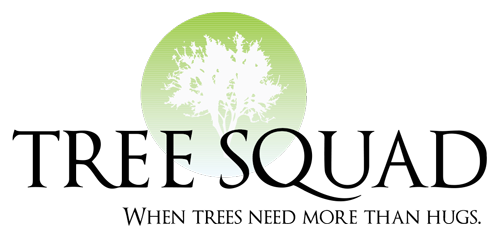Apple Scab
Attacks:
Apples, crabapples, and Mountain ash
What you will see:
- Velvety brown to olive colored spots on leaves
- Later, these spots turn black
- Heavily infected leaves may turn yellow and drop from the tree
- Fruit may also display lesions similar to leaves
- Lesions become brown and corky
- Infections cause fruit to mature unevenly and crack
Life cycle:
- In late fall and early spring, black pimples develop on infected leaves from the previous year
- Spores are released and blown by wind or splashed by rain to nearby trees
- The fungus may infect leaves, fruit, petioles, and blossoms
- Primary infections produce secondary spores which infect other leaves and fruit
- Secondary infections continue throughout the growing season during wet periods
Cultural practices:
- Plant less susceptible cultivars
- Rake and dispose of fallen leaves to reduce spores
- Do not compost infected leaves
- Improve air circulation through pruning
- Water at ground level only, avoid splashing on foliage
Additional Apple Scab Information:
Apple scab can mean big trouble for people who grow the fruit. Scab is the result of an infection from a fungus that affects not just the fruit, but the leaves of an apple tree as well. Fruits with scabs are not edible, and if the infection lingers it can weaken the tree.
Apple scab, as it presents on the fruit, first appears as olive green spots, which then transform to brown as time goes on. These spots will keep getting bigger, and at some point will become black and hard. Sometimes the fruit gets deformed and starts cracking open. The scabs on the leaves also go from olive green to brown, and they may cause leaves to turn yellow and fall off prematurely.
Apple scab lives on the leaves and fruits, even after they’ve fallen down. The fungus lasts through the winter on those fallen leaves, then ejects spores that catch onto other healthy leaves in the spring. The rain the in the late spring encourages infection as well. Crab apple trees are especially susceptible to infection, and can pass on the spores to your regular apple trees.
The difficulty of managing apple scab can depend on where you live. If you live in an area with more rain, then it can be very hard to stop the spore from thriving and spreading. Drier areas have an easier time of it, however. It’s never a bad idea to plant apple trees far from other apple trees, so it’s less likely that the infection can spread. You should inspect your trees every year for infection, and keep a record of the severity.
They say an ounce of prevention is worth a pound of cure, and it’s no different with apple scab. Planting disease resistant trees will prevent the fungus from spreading, and save you time and money on spraying your trees with fungicide. Immune trees will not need any spraying at all, so you can rest easy.
Now that you know about apple scab, you can be confident that you can manage and prevent it when tending to your apple trees.


